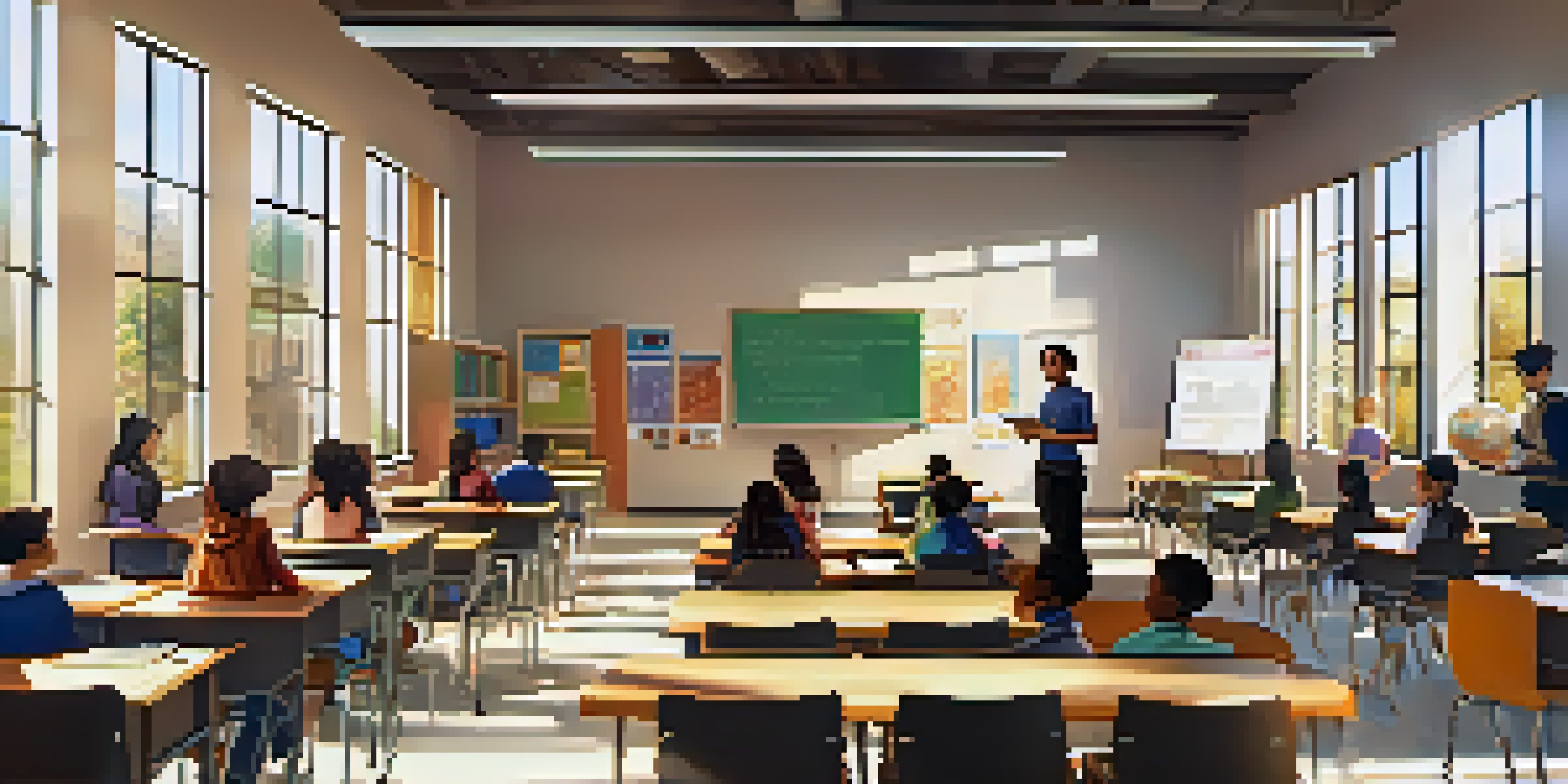Creating a Sustainable Blended Learning Model

Understanding Blended Learning and Its Importance
Blended learning combines traditional face-to-face instruction with online learning, creating a flexible and engaging educational experience. This approach enhances accessibility, allowing students to learn at their own pace while benefiting from direct interaction with educators. The importance of blended learning lies in its ability to cater to diverse learning styles and needs, making education more inclusive and effective.
Key Components of a Sustainable Blended Learning Model
A sustainable blended learning model includes three main components: technology, pedagogy, and assessment. Technology encompasses the online platforms and tools that facilitate learning, while pedagogy refers to the teaching strategies that effectively integrate both online and in-person elements. Assessment plays a crucial role in measuring student progress and ensuring that learning outcomes are met, helping to refine the blended approach over time.
Blended Learning Enhances Flexibility
Blended learning merges traditional and online instruction, offering students a flexible and engaging educational experience.
Creating an Engaging Online Learning Environment
To foster engagement in an online setting, it's essential to incorporate interactive elements like discussion forums, quizzes, and multimedia resources. These tools not only make learning fun but also encourage collaboration among students. By designing courses that invite participation, educators can create a sense of community, even in a virtual space, enhancing the overall learning experience.
Integrating Face-to-Face Instruction Effectively
Face-to-face instruction should complement online learning, providing opportunities for hands-on activities and direct interaction. This balance helps to reinforce concepts learned online and allows for immediate feedback. By strategically planning in-person sessions, educators can maximize the impact of both learning modes, ensuring that students gain a comprehensive understanding of the material.
Key Components Ensure Success
A sustainable blended learning model relies on technology, pedagogy, and assessment to effectively integrate learning methods.
Utilizing Technology to Enhance Learning
Technology plays a pivotal role in blended learning, enabling access to a wealth of resources and tools. From Learning Management Systems (LMS) to educational apps, these technologies can streamline lesson delivery and make learning more engaging. It's essential to choose the right tools based on the specific needs of your students, creating a tailored learning experience that resonates with them.
Monitoring Student Progress and Adaptation
Regularly monitoring student progress is key to maintaining a sustainable blended learning model. Utilizing analytics from online platforms can provide valuable insights into student engagement and areas needing improvement. By being responsive to these insights, educators can make necessary adjustments to the curriculum, ensuring that all students remain on track and supported in their learning journey.
Continuous Improvement Is Crucial
Regular evaluation and feedback are essential for refining the blended learning model, ensuring it meets the needs of all students.
Fostering a Supportive Learning Community
Building a supportive learning community is crucial for student success in a blended learning environment. Encouraging open communication and collaboration among students and teachers helps to create a safe space for sharing ideas and challenges. This sense of belonging can enhance motivation and engagement, making students more likely to thrive in their courses.
Evaluating and Improving the Blended Learning Model
Finally, evaluating the effectiveness of your blended learning model is essential for ongoing improvement. Gathering feedback from students and educators can provide insights into what works well and what needs adjustment. By continuously refining the model based on these evaluations, you can ensure that it remains relevant, effective, and sustainable for future learners.